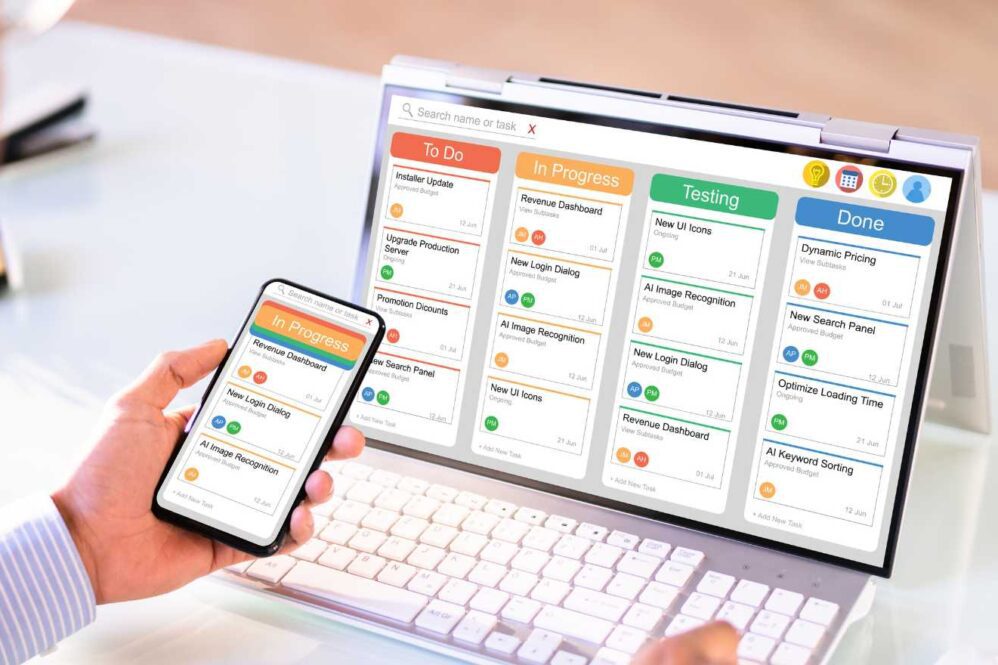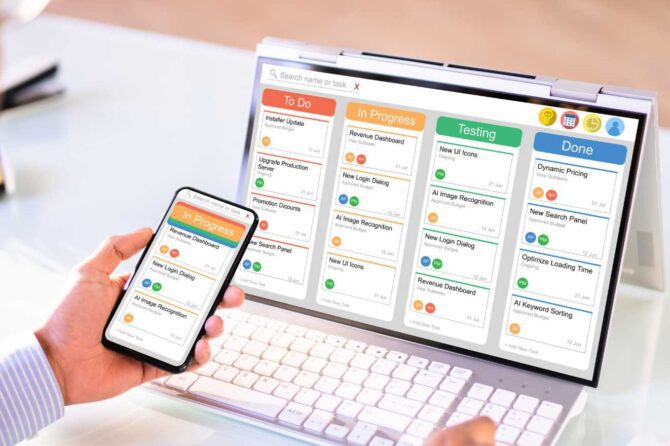Table of Contents
The Challenge of Managing Client Expectations
One of the biggest challenges that IT service providers face is managing client expectations effectively. In a highly competitive industry, the temptation to over-promise and under-deliver can be strong, especially during the sales and pitching process. However, setting unrealistic expectations can have severe consequences for project success, client satisfaction, and the long-term reputation of the company.
How AI-Powered Project Management Tools Can Save You from Unhappy Clients?
Common issues that arise from over-promising include budget overruns, missed deadlines, scope creep, and compromised quality. When clients are led to believe that their requirements can be met within an unrealistic timeframe or budget, it creates a foundation of mistrust and disappointment from the outset. This can lead to strained relationships, project failures, and potential legal disputes.
Moreover, failing to meet client expectations can have a ripple effect on the entire organization. Project teams may experience increased stress and burnout, leading to high turnover rates and a loss of valuable talent. Ultimately, the company’s reputation suffers, making it harder to attract and retain clients in the future.
The Risks of Over-Committing
Over-committing to clients can be detrimental to any IT project, leading to a range of issues that can jeopardize its success. One of the primary risks is budget overruns, where costs spiral out of control due to unrealistic timelines or unforeseen complexities. This can result in projects exceeding their allocated budgets, causing financial strain on both the client and the service provider.
Missed deadlines are another common consequence of over-committing. When teams take on more work than they can realistically handle, it becomes increasingly difficult to meet agreed-upon timelines. This can lead to frustration for clients, who may face delays in launching their products or services, potentially impacting their own business operations.
Scope creep is another significant risk associated with over-committing. As projects progress, clients may request additional features or changes that were not initially agreed upon. Without proper management and clear communication, these requests can quickly spiral out of control, leading to scope creep and further straining resources and timelines.
Perhaps the most damaging consequence of over-committing is the strain it can place on client relationships. When promises are not met, trust can be eroded, and clients may become dissatisfied with the service provided. This can not only jeopardize the current project but also negatively impact future business opportunities with that client.
The Benefits of Using AI for Expectation Setting
Leveraging AI-Powered Project Management can provide significant advantages in setting realistic client expectations and mitigating project risks. By analyzing historical data from past projects, AI algorithms can identify patterns, resource constraints, and potential bottlenecks, enabling more accurate project planning and forecasting.
AI models can simulate various scenarios, taking into account factors such as team capacity, skill sets, dependencies, and timelines. This simulation capability allows project managers to explore different approaches and identify potential risks or roadblocks before committing to unrealistic deadlines or resource allocations.
Moreover, AI can continuously monitor project progress, adjusting expectations and alerting stakeholders when deviations from the plan occur. This proactive approach helps manage client expectations throughout the project lifecycle, reducing the likelihood of surprises or disappointments.
By leveraging AI’s ability to process vast amounts of data and perform complex calculations, IT companies can make more informed decisions, set achievable goals, and provide clients with realistic timelines and cost estimates from the outset. This transparency and accuracy in expectation setting contribute to building trust and fostering long-term client relationships.
Integrating AI-Powered Project Management into the Sales and Delivery Process
Integrating AI into the sales and delivery process is a game-changer for IT companies aiming to set realistic client expectations and deliver successful projects. By leveraging AI-assisted requirements gathering, companies can ensure that client needs are thoroughly understood and accurately translated into project specifications.
AI-powered tools can analyze historical data, industry trends, and client feedback to identify potential gaps or inconsistencies in the requirements-gathering process. This proactive approach helps mitigate the risk of overlooking critical details or making assumptions that could lead to misaligned expectations.
Moreover, AI-Powered Project Management can play a crucial role in validating proposals before they are presented to clients. Sophisticated algorithms can analyze the proposed solution, resources, timelines, and budgets, cross-referencing them against similar past projects and industry benchmarks. This validation process helps identify potential areas of concern or unrealistic commitments, allowing for adjustments before the proposal is finalized.
One of the most significant advantages of integrating AI is the ability to implement dynamic pricing models. Traditional pricing methods often rely on static assumptions or outdated data, leading to inaccurate cost estimates. AI-driven pricing models, however, can continuously analyze real-time market data, resource availability, and project complexities, providing more accurate and adaptable pricing strategies.
By leveraging AI throughout the sales and delivery process, IT companies can proactively identify and address potential issues, ensuring that client expectations are aligned with realistic project goals and timelines. This proactive approach not only reduces the risk of project failures but also fosters trust and transparency with clients, laying the foundation for successful long-term partnerships.
The Importance of Clear Communication
Effective communication is the backbone of successful project delivery. IT companies need to establish clear channels for setting expectations, addressing concerns, and establishing accountability with clients from the outset. Transparent communication builds trust and ensures that everyone is on the same page regarding project goals, timelines, and responsibilities.
By fostering open dialogue, companies can proactively address potential roadblocks or misunderstandings before they escalate. This approach allows for collaborative problem-solving and helps manage client expectations realistically. When challenges arise, clear communication enables teams to promptly communicate the situation, propose solutions, and realign expectations accordingly.
Furthermore, establishing accountability through clear communication ensures that all parties understand their roles and responsibilities. This clarity minimizes confusion and facilitates a smooth project execution. By setting expectations transparently, addressing concerns promptly, and establishing accountability, IT companies can cultivate strong client relationships built on trust and mutual understanding. And AI-Powered Project Management will help you do so.
Investing in Robust AI-Powered Project Management Communication Tools
Effective communication is the backbone of successful project management and client relationships. To ensure seamless collaboration and alignment of expectations, IT companies must invest in robust AI-Powered Project Management communication tools that facilitate real-time information sharing, documentation, and knowledge transfer.
Project management software plays a crucial role in streamlining communication and ensuring transparency throughout the project lifecycle. These platforms enable teams to create detailed project plans, assign tasks, track progress, and share updates with stakeholders. By providing a centralized location for project information, everyone involved can stay informed and aligned with the project’s objectives and timelines.
Collaboration platforms, such as instant messaging and video conferencing tools, facilitate real-time communication and foster a sense of connectedness within distributed teams. These tools enable quick decision-making, problem-solving, and knowledge sharing, ensuring that everyone is on the same page and can address issues promptly.
Documentation and knowledge sharing are essential components of effective communication. By maintaining comprehensive project documentation, including requirements, specifications, and design documents, teams can ensure that expectations are clearly defined and understood by all stakeholders. Additionally, creating a knowledge base or repository for best practices, lessons learned, and frequently asked questions can help onboard new team members quickly and promote consistent delivery across projects.
Investing in robust communication tools not only enhances collaboration and alignment but also contributes to building a strong knowledge base within the organization. This knowledge base serves as a valuable asset, enabling IT companies to continuously improve their processes, leverage past experiences, and deliver projects more efficiently while meeting or exceeding client expectations.
Fostering a Culture of Collaboration
Effective collaboration is essential for setting and meeting realistic client expectations. By breaking down silos and encouraging knowledge sharing across teams, organizations can cultivate a customer-centric mindset that prioritizes understanding and addressing client needs.
Cross-functional teams that bring together expertise from various domains, such as sales, marketing, project management, and technical specialists, can collectively assess project requirements, identify potential risks, and develop strategies to mitigate them. This collaborative approach ensures that multiple perspectives are considered, reducing the likelihood of overlooking critical factors that could lead to unrealistic expectations or project failures.
Fostering a culture of collaboration also involves empowering employees to voice their concerns and share their insights openly. When team members feel comfortable challenging assumptions or raising red flags, potential issues can be addressed proactively, preventing the propagation of unrealistic expectations.
Furthermore, a collaborative environment encourages knowledge sharing and continuous learning. As teams work together on projects, they can exchange best practices, learn from each other’s experiences, and collectively enhance their ability to set and manage realistic expectations effectively.
The Project Manager’s Role in Expectation Setting
As the bridge between the client and the delivery team, project managers play a crucial role in setting and managing expectations throughout the project lifecycle. Their responsibilities include facilitating stakeholder alignment, managing change requests, and negotiating scope to ensure projects stay on track.
Project managers must actively engage with clients, understand their needs and vision, and translate them into clear, achievable goals for the team. By leveraging AI-driven insights and data analysis, they can better anticipate potential roadblocks, identify risks, and proactively address them before they escalate.
Effective change management is another critical aspect of a project manager’s role. As requirements evolve or new challenges arise, project managers must facilitate open communication channels, negotiate reasonable adjustments to scope, and ensure that all stakeholders are aligned on the revised expectations.
Moreover, project managers must strike a balance between accommodating client requests and maintaining project viability. With the support of AI-driven analytics, they can objectively assess the impact of proposed changes on timelines, budgets, and resource allocation, enabling informed decision-making and transparent negotiations with clients.
By fostering a culture of collaboration and leveraging AI-driven project management tools for expectation setting, project managers can navigate the complexities of client engagements, mitigate risks, and drive successful project outcomes that meet or exceed client expectations.
Continuous Improvement through Data Analysis
Embracing an AI-Powered Project Management data-driven approach is crucial for continuous improvement in managing client expectations and project delivery. By tracking key metrics and leveraging the power of AI-Powered Project Management, IT companies can gain valuable insights into their processes, identify bottlenecks, and optimize their operations for better efficiency and success.
Tracking metrics such as project timelines, resource utilization, and client satisfaction scores can provide a comprehensive view of project performance. AI-powered analytics can then analyze this data, uncovering patterns and trends that may not be immediately apparent to human observers. This data-driven approach enables companies to pinpoint areas for improvement, streamline workflows, and make informed decisions to enhance project outcomes.
Moreover, AI can be leveraged to optimize resource allocation, ensuring that the right team members with the appropriate skills are assigned to the right tasks at the right time. By analyzing historical data and factoring in variables such as team member availability, skillsets, and project requirements, AI-powered project Management can recommend optimal resource allocation strategies, reducing the risk of overloading or underutilizing team members.
Furthermore, AI can assist in identifying potential risks and bottlenecks in the project delivery process. By continuously monitoring project data, AI-powered project management tools can detect deviations from established timelines or budgets, allowing project managers to proactively address issues before they escalate. This proactive approach minimizes the likelihood of project delays or failures, ensuring that client expectations are met consistently.
Continuous improvement through data analysis and AI-Powered Project Management integration is not a one-time effort but an ongoing process. As new data is generated from each project, the AI-powered project management algorithms can be retrained and refined, leading to more accurate predictions and optimizations over time. This iterative approach fosters a culture of continuous learning and adaptation, enabling IT companies to stay ahead of the curve and consistently deliver exceptional client experiences.
Balancing Innovation and Realistic Promising
Setting ambitious yet achievable goals is crucial for IT companies to drive innovation using AI-powered project management tools while managing client expectations effectively. While pushing the boundaries of technology is essential, it’s equally important to strike a balance between innovation and realistic promise. Overcommitting to cutting-edge solutions without considering technical debt, resource constraints, and sustainable processes can lead to project failures and dissatisfied clients.
Successful IT companies understand the importance of managing technical debt, which refers to the accumulated costs and challenges associated with implementing quick fixes or suboptimal solutions. By prioritizing sustainable development practices and investing in robust architectures, companies can minimize technical debt and ensure that their solutions are scalable, maintainable, and adaptable to future requirements.
Moreover, fostering a culture of continuous improvement and iterative development allows IT companies to introduce innovative features gradually while maintaining realistic timelines and budgets. This approach enables teams to gather feedback, refine their solutions, and incorporate client input throughout the project lifecycle, ensuring that the final product meets or exceeds expectations.
By balancing innovation with realistic promises, IT companies can position themselves as trustworthy partners who deliver high-quality solutions while maintaining a competitive edge in the market. This approach not only enhances client satisfaction but also contributes to building long-term relationships built on transparency, reliability, and a shared commitment to success.
Building Long-Term Client Relationships
Earning a client’s trust is the cornerstone of a successful, long-term partnership. By setting realistic expectations from the outset and delivering on those promises, IT companies can position themselves as reliable and trustworthy partners. This trust is further solidified through open communication, transparency, and a genuine commitment to the client’s success.

As the relationship matures, IT companies have the opportunity to evolve from a service provider to a strategic partner. By leveraging their expertise and deep understanding of the client’s business, they can offer valuable insights, identify areas for improvement, and suggest innovative solutions that drive growth and efficiency. This strategic advisory role cements the IT company’s position as an indispensable asset to the client’s organization.
Ultimately, the goal is to turn clients into advocates – satisfied customers who enthusiastically recommend the IT company’s services to others. When clients feel that their expectations have been consistently met or exceeded and that the IT company has truly partnered with them to achieve their goals, they become powerful ambassadors for the brand. These advocates not only provide valuable referrals but also contribute to the company’s reputation, solidifying its position as a leader in the industry.
Conclusion: Unlocking Success through AI-Powered Project Management and Collaboration
In today’s fast-paced and competitive IT landscape, managing client expectations is a critical factor in achieving project success. By embracing the power of AI and fostering a culture of clear communication and collaboration, IT companies can unlock a pathway to delivering exceptional client experiences and driving long-term business growth.
The integration of AI-Powered Project Management tools into the sales and delivery processes empowers teams to set realistic expectations from the outset, mitigating the risks of over-committing and project failures. However, AI alone is not a silver bullet; it must be complemented by robust communication tools and a collaborative mindset that permeates throughout the organization.
Effective communication ensures that client requirements are clearly understood, timelines are accurately set, and potential roadblocks are identified early on. By investing in cutting-edge communication platforms and fostering an environment where open dialogue is encouraged, IT companies can build trust and transparency with their clients, setting the stage for successful project delivery.
Moreover, a culture of collaboration is paramount. By breaking down silos and promoting cross-functional teamwork, IT companies can leverage the collective expertise of their workforce, enabling them to tackle complex challenges and adapt to changing project demands seamlessly.
As you embark on this journey of leveraging AI, communication, and collaboration, remember that success is a continuous process. Regularly analyze project data, gather client feedback, and identify areas for improvement. Embrace a mindset of continuous learning and adaptation, as this will enable you to refine your processes and stay ahead of the curve.
The path to unlocking success through AI-powered project management and collaboration may not be easy, but the rewards are immense. By implementing these best practices, you can position your IT company as a trusted partner, capable of delivering exceptional value to your clients while fostering long-lasting relationships built on trust, transparency, and mutual success.
We can always connect to discuss more, we have experts who can help you with AI-Powered Project Management tools.




